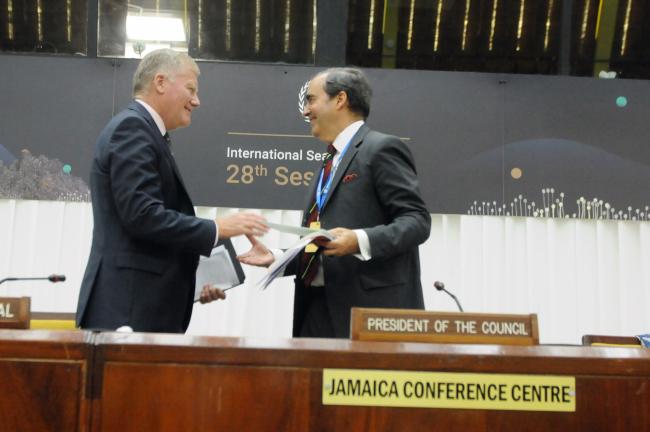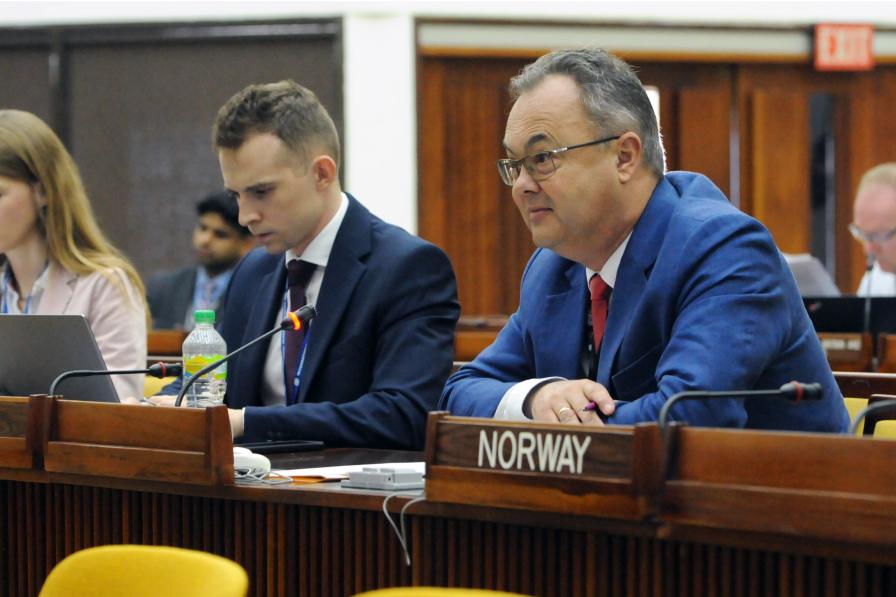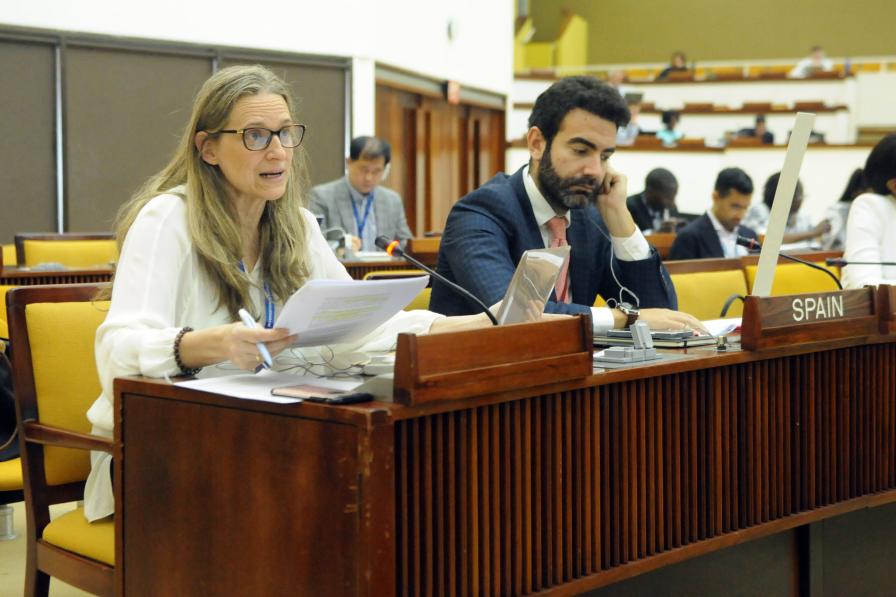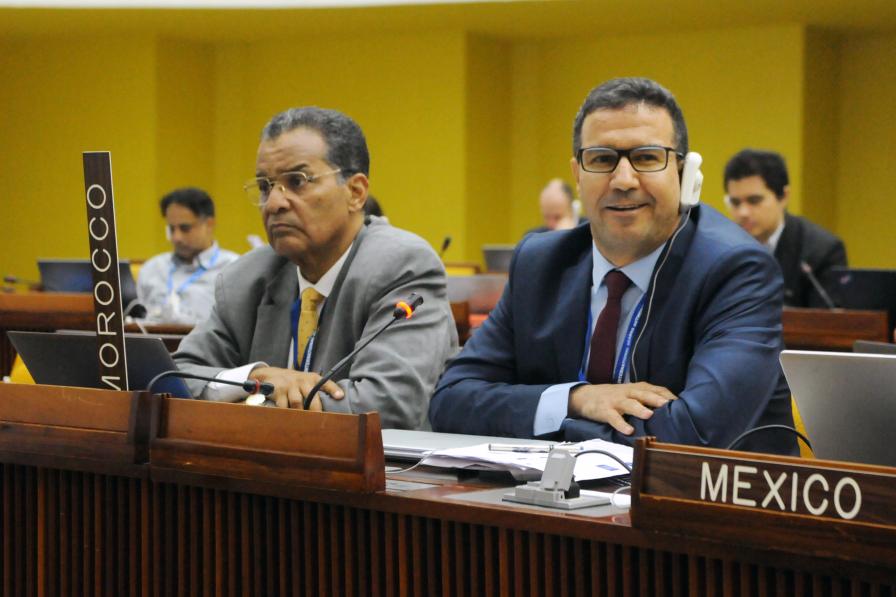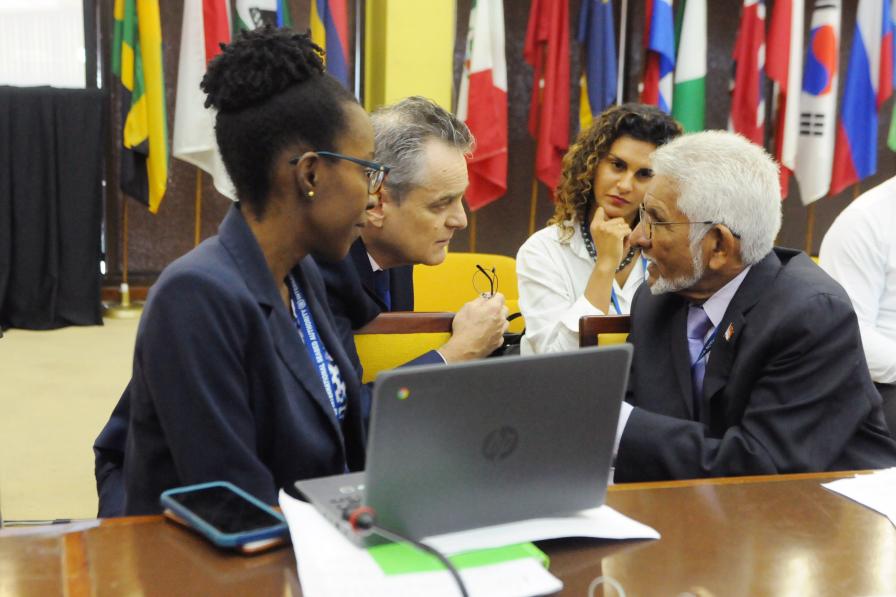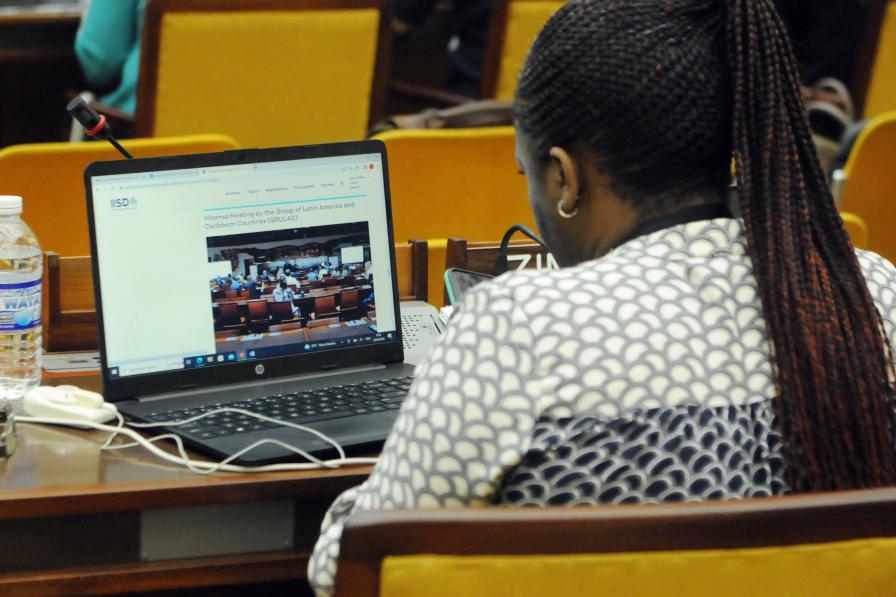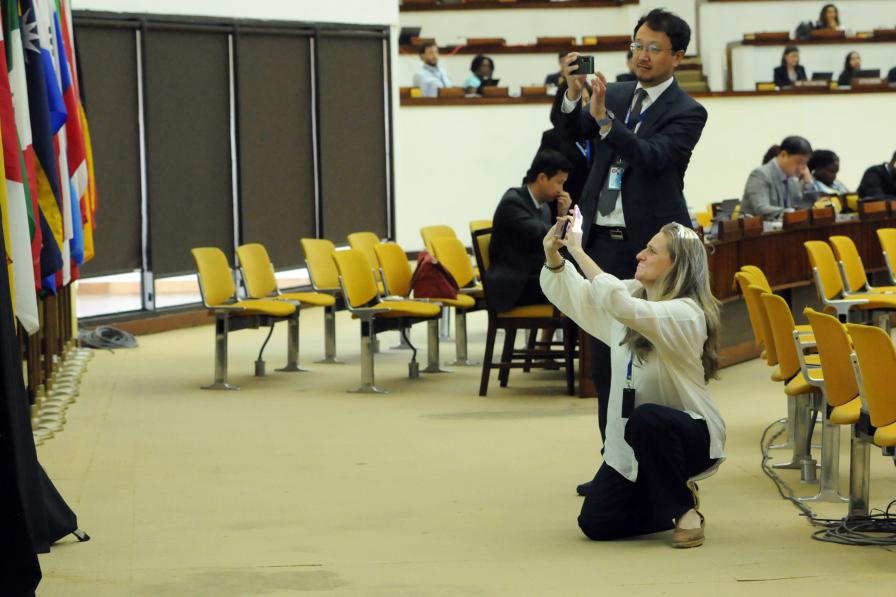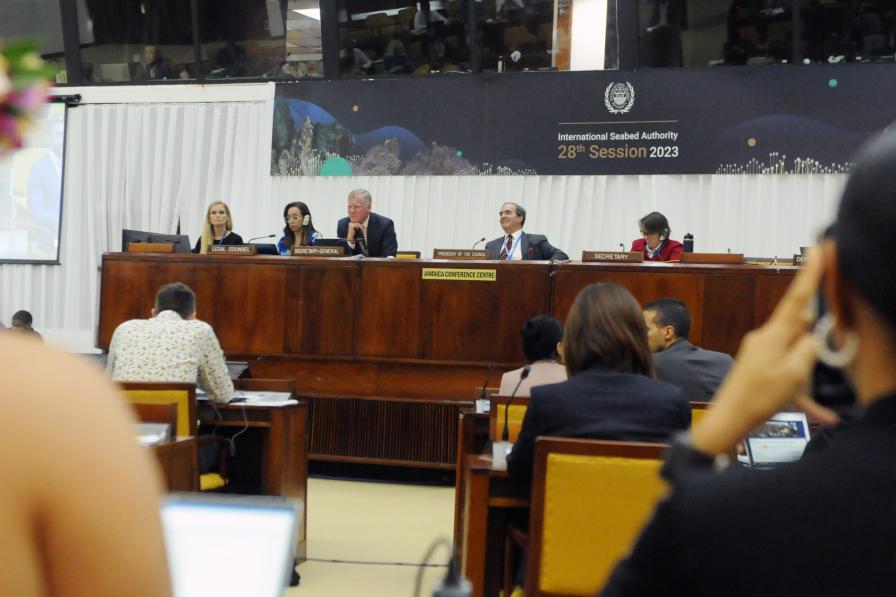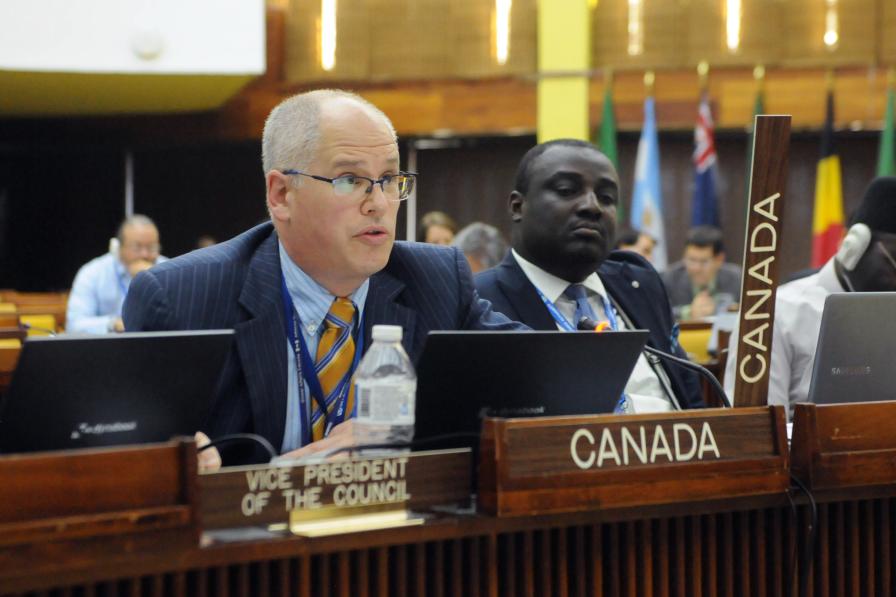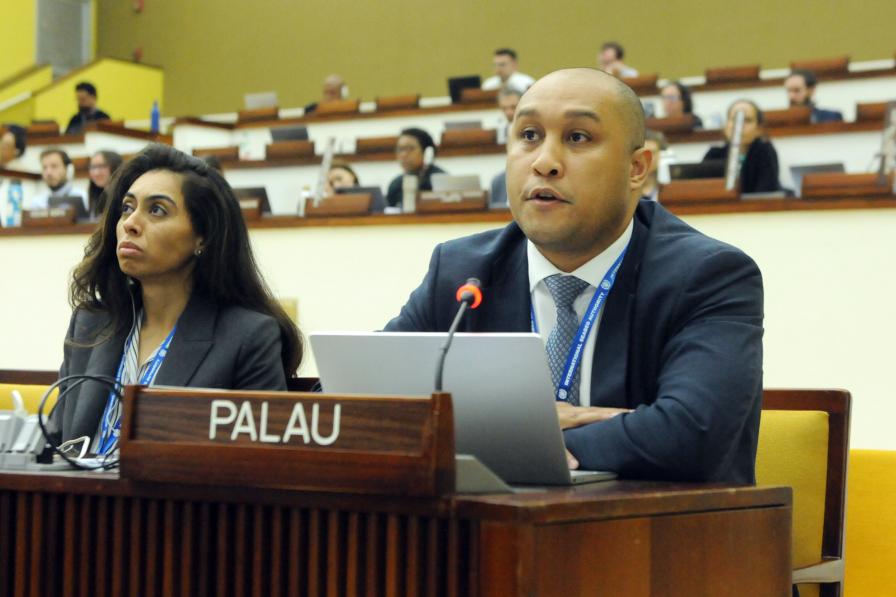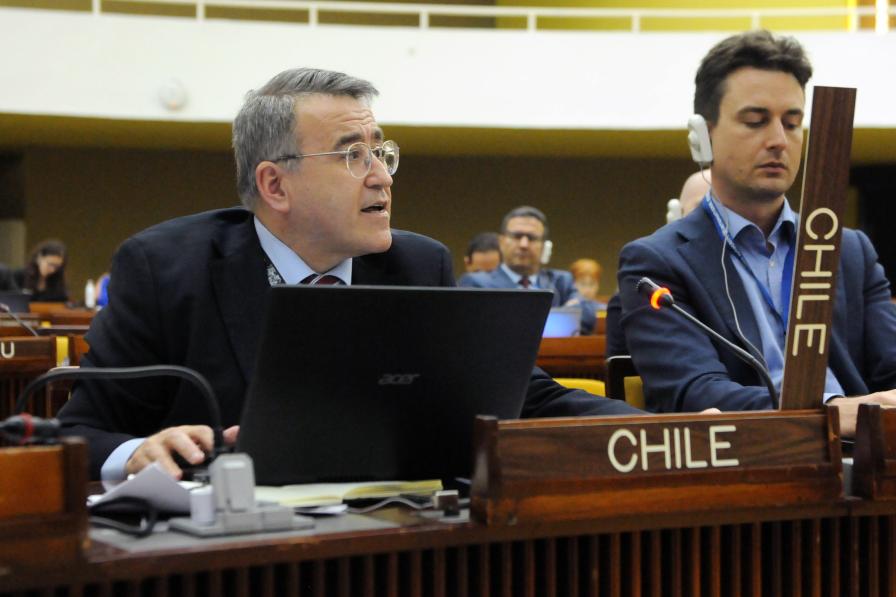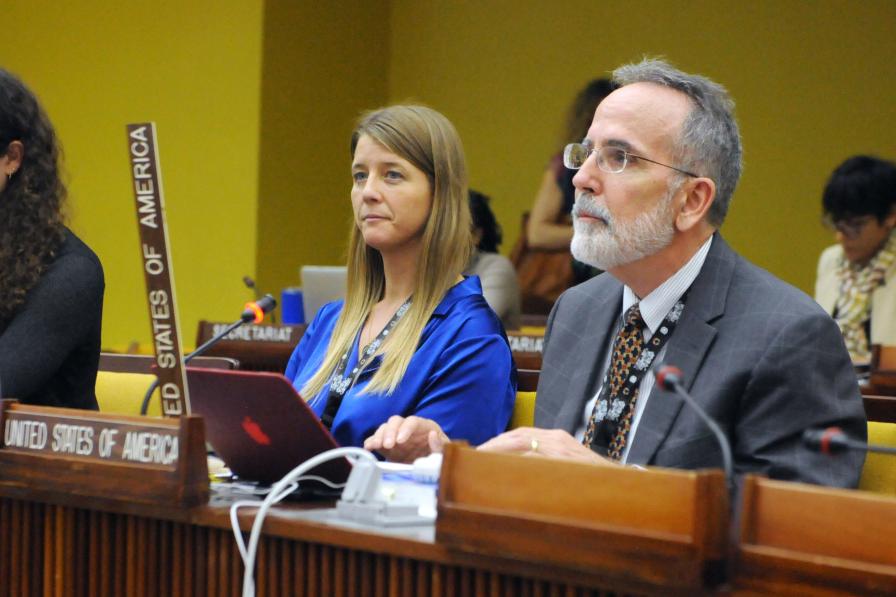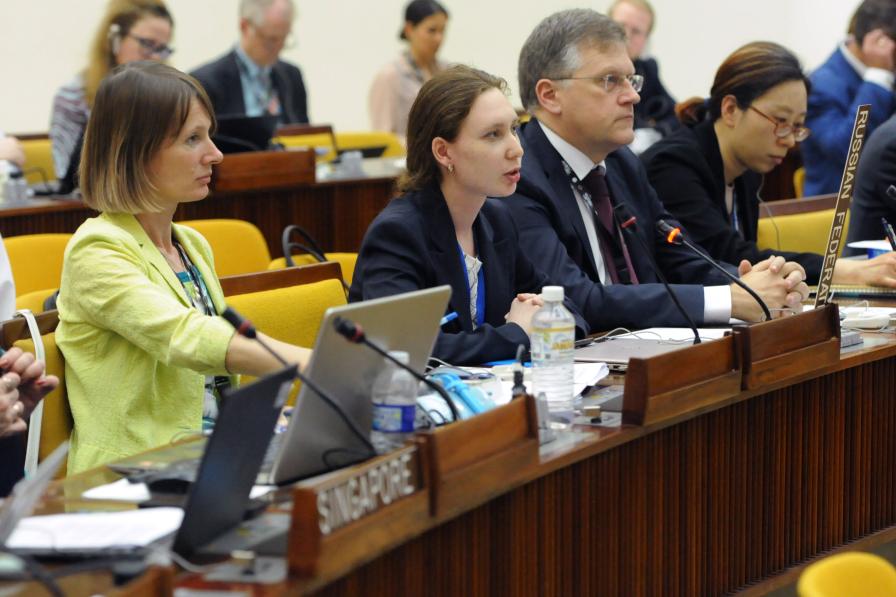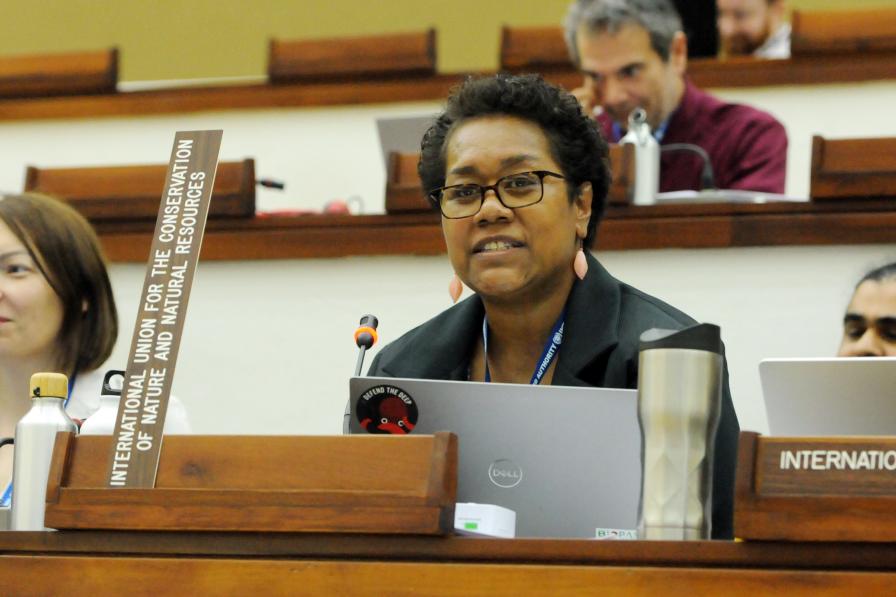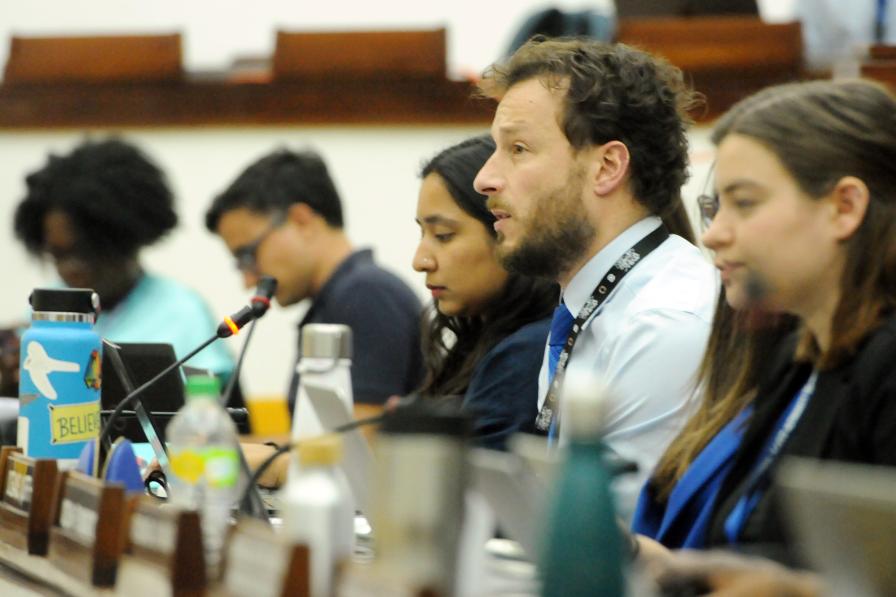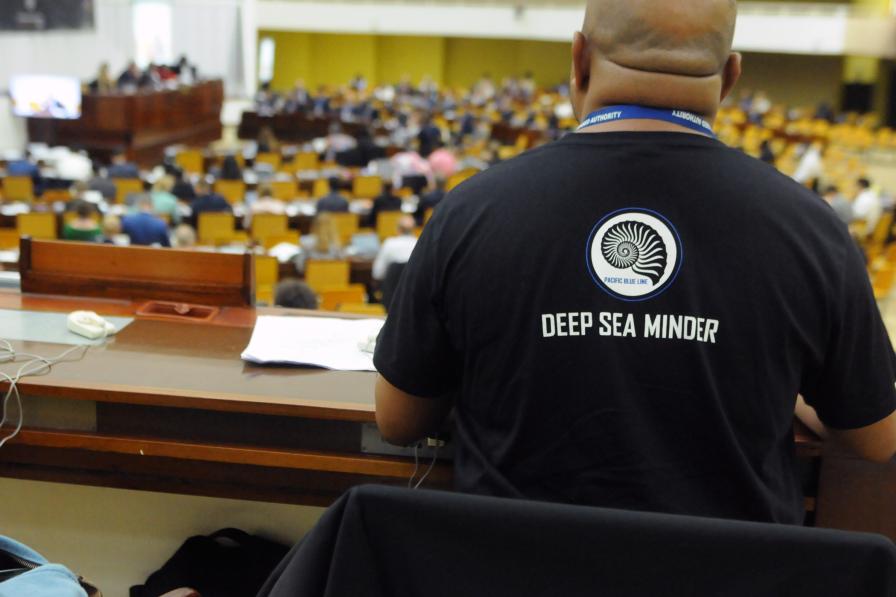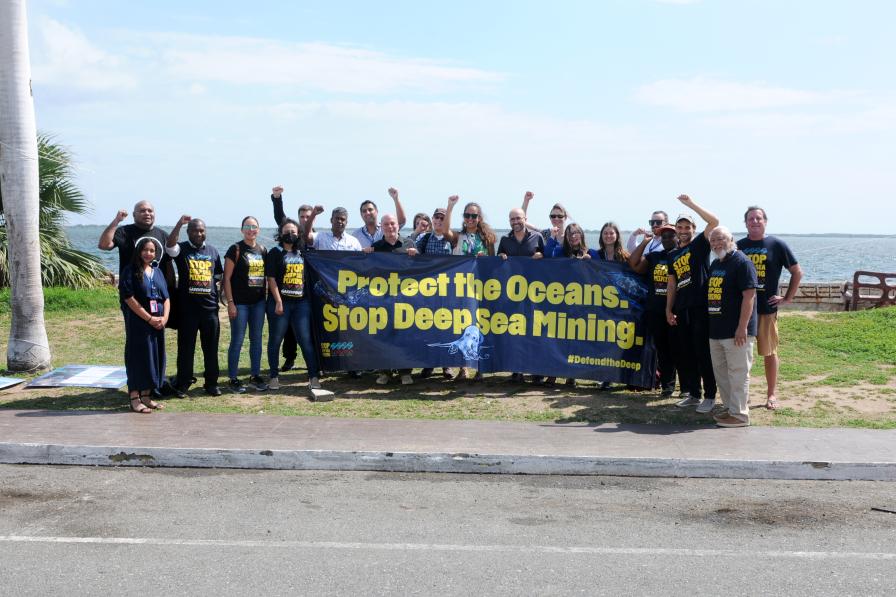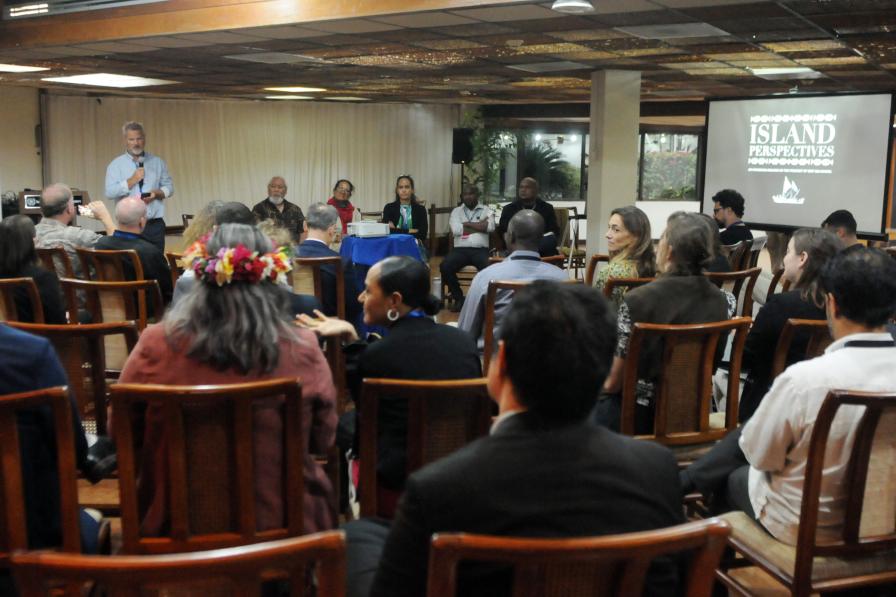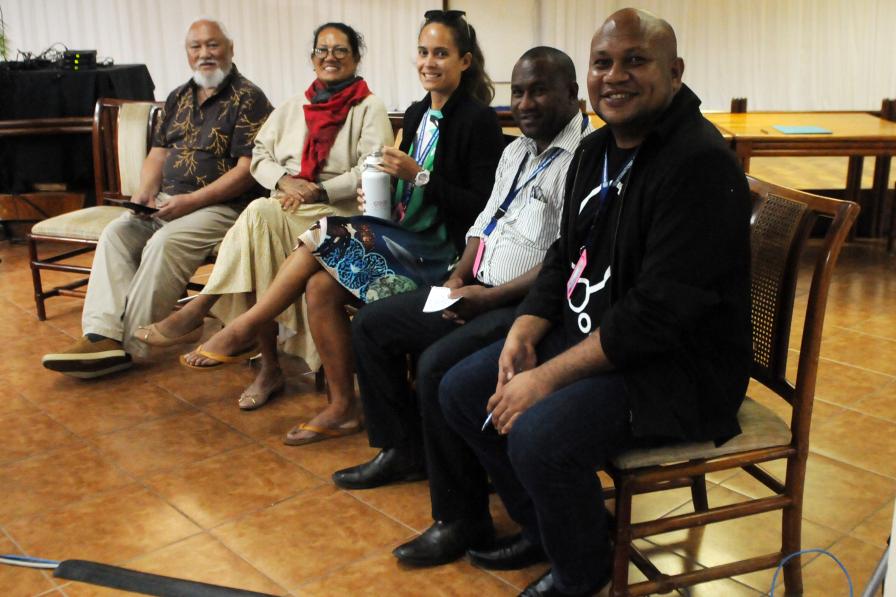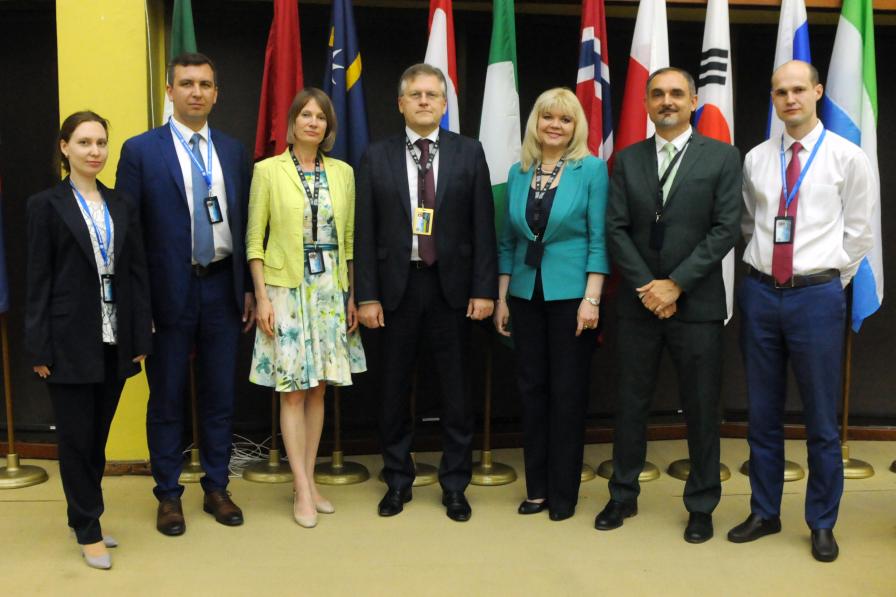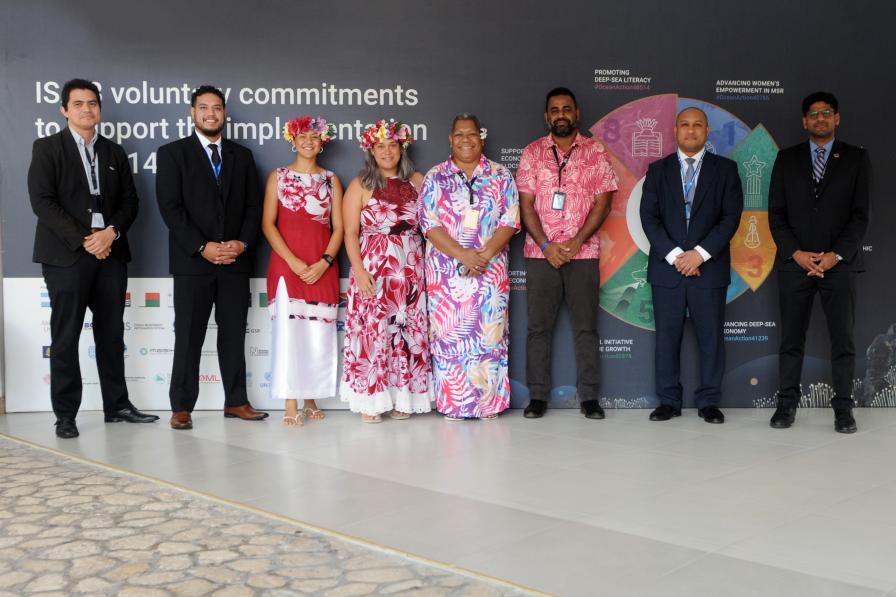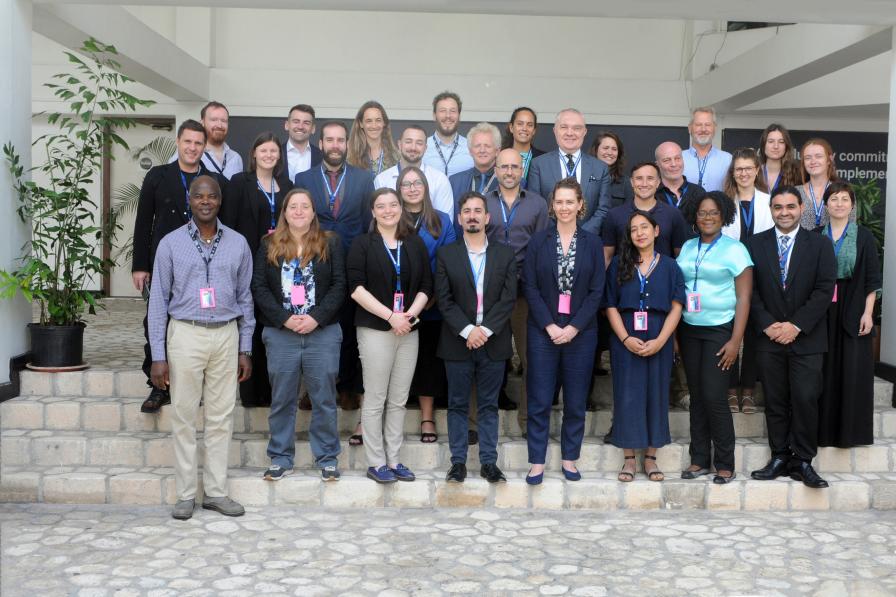The long-awaited discussion on the “two-year rule,” held in the afternoon, dominated the discussions during the seventh day of deliberations as many have expressed concerns over the potential approval of a plan of work for commercial exploitation of deep sea minerals under this rule, without a robust set of regulations in place that will ensure, among others, environmental protection.
In the morning, during a brief plenary session, President Juan José González Mijares (Mexico) thanked delegates for their hard work, noting that deliberations have been so intense that it feels like “the Council has been meeting for more than a week.” Olav Myklebust (Norway), Chair of the Working Group on the financial terms of a contract, reported on progress during the group’s discussions on Thursday and Friday, 16-17 March, as well as on intersessional work.
The Working Group on inspection, compliance, and enforcement, facilitated by Maureen Tamuno (Nigeria), resumed its work. On compliance notice, suspension, and termination of exploitation contract, delegates agreed to delete a provision related to having a Bureau member always available to convey virtual Council meetings to ensure timely response on measures imposed by the compliance committee. On power to take remedial action, delegates agreed to remove a sentence on terms for extinguishing the contractor’s debt.
Facilitator Tamuno noted progress in the draft regulations, emphasizing the need to reach consensus on the overall institutional arrangements. She invited interested delegations to present diagrammatic illustrations on their proposed models without prejudice to the discussion during the intersessional period.
Two delegations presented their suggestions. The first includes an independent compliance mechanism, to be appointed by the Council as a subsidiary body upon relevant recommendations by the Legal and Technical Commission (LTC), acting independently from due interference. The second envisages a central role for the LTC in the institutional framework with inspectors working under the LTC. Under this approach, the Council, based on LTC recommendations, will be responsible for issuing emergency orders, compliance notices, and potential penalties, drawing the attention of the Assembly to cases of non-compliance.
Facilitator Tamuno thanked all delegates and observers for their contributions, and highlighted intersessional work, to be facilitated by Norway, on the institutional structure, including considerations on the Enterprise.
In the afternoon, the Council engaged in the long-awaited discussion on the “two-year rule” also known as the “trigger” or “deadline,” and colloquially referred to as the “what if” scenario. The two-year rule refers to Section 1(15) of the 1994 Agreement Relating to the Implementation of Part XI (the Area) of the UN Convention on the Law of the Sea (1994 Implementing Agreement). It stipulates that if a state submits a request for a plan of work for exploitation, or if a state expresses it intends to apply for approval of a plan of work for exploitation, the Council shall complete the adoption of the relevant rules, regulations, and procedures within two years of the request.
In June 2021, Nauru submitted such an intent, triggering the two-year deadline, which will expire on 9 July 2023. Nauru has indicated that it does not plan to support any plan of work for exploitation prior to the second Council meeting for the 28th session, which is scheduled to conclude its deliberations on 21 July 2023.
President Mijares noted that in 2022 the Council established an informal intersessional dialogue on the “two-year rule” to facilitate further discussion on the possible scenarios and on any other pertinent legal considerations. He invited the co-facilitators of the intersessional dialogue to present the main outcomes.
Hugo Verbist (Belgium) and Tan Soo Tet (Singapore) presented the outcomes of the intersessional dialogue, which focused on:
- the meaning of the phrase “consider and provisionally approve” a plan of work and whether this includes potentially not approving the plan or postponing consideration of a pending application;
- the procedure and criteria to be applied in the consideration and provisional approval of a pending application and the respective roles of the Council and the LTC; and
- the consequences of the Council provisionally approving a plan of work, including whether a provisional approval of a plan of work equates to the conclusion of an exploitation contract.
They highlighted points of convergence, including that: there is no obligation on the Council to automatically approve a pending application for a plan of work; there is a role for both the Council and the LTC in the consideration of a pending application for a plan of work; and provisional approval of a plan of work is not the same as, and does not amount to, final approval, nor does it equate to a contract for exploitation.
Divergences remain on:
- the legal basis and circumstances for the Council to postpone the consideration and/or provisional approval of a pending application for a plan of work;
- whether the LTC is required to review a plan of work and submit recommendations to the Council as part of the process of consideration;
- the guidelines, directives, or instructions that the Council may give to the LTC, including relevant criteria, for reviewing a plan of work; and
- the considerations and procedures that apply after a plan of work for exploitation has been provisionally approved, leading up to the conclusion of a contract for exploitation.
Many delegates stressed that no commercial activities in the Area should commence before a comprehensive set of rules, regulations, and procedures are in place, with many suggesting ways to procedurally ensure this. Many stressed the need to ensure effective protection for the marine environment from harmful effects. They further pointed towards significant uncertainties and knowledge gaps on the understanding of deep-sea ecosystems, suggesting a precautionary pause or moratorium, in line with the precautionary principle and ecosystem approach.
Others opined that the Council’s work should focus on finishing the regulatory framework, and that any plan of work submitted should be treated as a regular submission. They highlighted the LTC’s role to conduct a preliminary review and submit relevant recommendations to the Council to take the final decision and cautioned against interfering with LTC’s work.
One observer warned against Council decisions that might undermine the Ocean’s conservation successful outcomes in other fora, including the recently finished BBNJ negotiation. Others emphasized the need to involve youth in this discussion as well as Indigenous Peoples’ perspectives and voices from the Pacific. A detailed account of regional group, national, and observer statements will be included in the meeting’s summary, which will be published upon conclusion of the first part of the Council’s deliberations for ISA’s 28th session.
Text written and edited by Asterios Tsioumanis, Ph.D., María Ovalle, and Pam Chasek, Ph.D.
All ENB photos are free to use with attribution. For the 1st Part of the 28th Annual Session of the ISA, please use: Photo by IISD/ENB | Diego Noguera
To receive free coverage of global environmental events delivered to your inbox, subscribe to the ENB Update newsletter.

